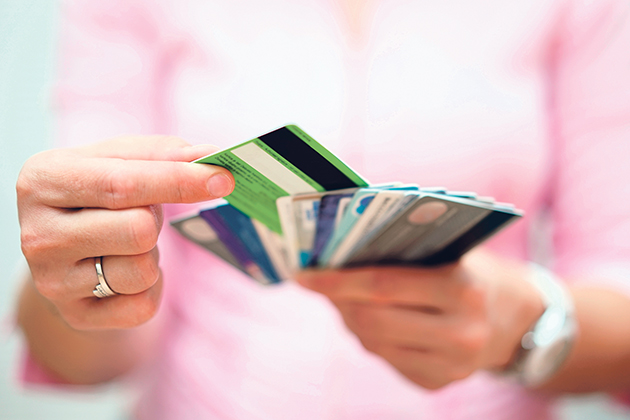A big decision to make when travelling abroad is how to manage your money.
Should you take a pocketful of cash, bank cards, credit cards or travellers cheques? The answer varies depending on where you’re going, but here’s a few things to consider.
Our first choice is using credit cards where possible, followed by cash from ATMs. Credit or ATM cards use the interbank exchange rate, which is better than the rate for cash or travellers cheques.
We can’t rely on credit cards everywhere because much of the world still operates on a cash economy.
Read Also

Accurate accounting, inventory records are important
Maintaining detailed accounting and inventory records is not just a best practice; it’s a critical component of financial health, operational efficiency and compliance with programs like AgriStability.
On a recent trip to South Africa, we used credit cards most of the time, while in Latin America, we seldom use them.
Major hotel chains take plastic, but local guest houses and small restaurants usually want cash. A common practice in many countries is charging a premium for credit card payments. Even in the United States, some gas stations offer two prices, one for credit cards and a lower one for cash.
Almost all credit card companies tack on a foreign exchange fee, usually around 2.5 percent. It’s not obvious on your credit card statement, but instead it’s hiding in the small print. The fee varies, so compare when choosing a card for travel.
Tangerine Bank, for example, advertises 1.5 percent on one of its cards. Chase Bank is one of few in Canada to offer credit cards such as the Marriott Rewards and Amazon cards with no foreign exchange fees.
Using ATMs, you might pay a fee imposed by your home bank, and another fee at the bank where you withdraw. At our bank, ATM withdrawals are free with a minimum account balance.
Withdrawal fees vary widely, and there might be limits on the amount you can withdraw at one time. In some countries, such as Vietnam, we’ve seen ATM fees at one bank double what the bank next door charges.
The machine should display the fee before you complete the transaction. If it looks too high, cancel the transaction and try a different bank.
Usually it’s a flat fee for withdrawals, so you’re better off making one large withdrawal rather than several small ones. Balance this with how much cash you are comfortable carrying.
A cash advance on a credit card is another option, but this should be reserved for emergencies since grossly inflated interest rates begin the day of the withdrawal. For most international trips, we prepay a credit card, so there is money in the account in case we need a cash advance. It avoids interest charges, but there is still a withdrawal fee.
If you plan on using plastic a lot, never rely on one bank or one credit card. We travel with a minimum of three bank cards and three credit cards issued by different banks.
On one trip to Mexico, where ATMs are generally reliable, our preferred bank card suddenly stopped working for no apparent reason. Fortunately, the others worked fine.
We had only one experience where everything seemed to fail. We had been using ATMs throughout South Africa without any problems, but when we crossed the border into Namibia things changed completely.
We tried ATMs at all three banks in the first small town we visited, using all our bank cards and credit cards, with no success.
The next day, we tried all our cards again at a gas station ATM in the middle of the desert. It felt as if we had hit the jackpot at a slot machine when one card worked and money started spewing out.
That experience reinforced the importance of backups.
We often travel with some cash in U.S. dollars (the closest thing to a universal currency), which we can use if all else fails, or if the country we’re visiting does business in that currency.
There’s no trouble exchanging Canadian cash at Mexican resort towns like Cancun, but it’s a different story farther off the beaten track.
Usually the best way to change money is at a bank, but not always. When we were in Bolivia last year, private currency exchange kiosks in the street had better rates than banks.
The worst place to change money is usually airports where they assume that travellers will tolerate poor exchange rates for the sake of convenience. As always, there are exceptions.
Rates are often better at bank-based currency exchanges rather than at private operators in airports.
Some people prefer to buy currency for their destination country before leaving Canada, so they have one less thing to contend with on arrival.
Keep in mind that for many currencies, you’ll get a better rate once you arrive rather than buying in advance, plus fee-hungry Canadian banks may charge you for this convenience.
Travellers cheques used to be a popular way to carry money, but have lost their lustre with the prevalence of ATMs.
Fewer places accept them now, so you may have to exchange them at a bank (where they might charge you a fee).
Don’t discount travellers cheques entirely, especially if you can get them without paying a commission (often a perk of some bank plans). They are safer than carrying cash, and it’s another backup when technology fails.
When you return, simply take the unused cheques back to your bank.
















